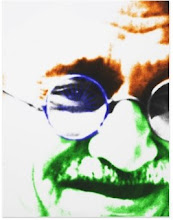The identity of those who expose corruption might be revealed under the Right to Information Act.
Corruption is the cancer of public life today. There is a universal growing recognition that corruption is anti-economic development, anti-poor and anti-national.
At last there are some systematic efforts being made to tackle the issue of corruption. The directive by the Supreme Court that candidates standing for election will have to declare details of their criminal record, their wealth and educational qualification has injected an element of transparency in public life.
The passing of the Right to Information Act is hailed as a major step to empowering civil society and making the government more accountable. Sunshine is the antidote for corruption and the more transparent public organisations become, there will be lesser scope for corruption.Equally important is the role played by people within a corrupt organisation in exposing corruption. These people are taking a great risk by exposing corruption in their organisations. Satyendra Dubey’s name flashes to mind readily. He was a sincere whistleblower in the National Highways Authority of India (NHAI) and had to pay a heavy price — his life.
This moved the Supreme Court to issue a directive to the CVC saying that action must be taken to protect whistleblowers.
Whistleblowers normally face a lot of problems in their careers. By exposing corruption among their superiors, they face the possibility of direct or indirect punishment. This could be in the form of lack of advancement and promotions ultimately leading to their careers failing.
The Whistleblowers’ Act at least protects the career interest of the whistleblowers and their identity. But a more important issue is the risk whistleblowers face in terms of physical harm. There is no provision for providing physical protection to them. That is the first part of the dilemma which whistleblowers in our country face.
The second aspect of the dilemma faced by whistleblowers is paradoxically because of the Right to Information Act! I recently learnt about an employee of a government of India public sector enterprise who tried to expose corruption amongst his superiors. He approached the chief vigilance officer of the organisation. The vigilance officer told him that while he may initiate action on his complaint, his identity as a whistleblower could not be protected because this may have to be revealed under the provisions of the Right to Information Act.
Here we see a classic example of the path to hell being paved with good intentions. In the case of whistleblowers who expose cases of corruption, should their identity also be revealed under the Right to Information Act? The only advice I can give is that the whistleblower should approach the CVC directly and make his case. CVC is under the Supreme Court’s directive to protect the identity of whistleblowers thanks to the tragic case of Satyendra Dubey.
But how many will be able to approach the CVC? This is the dilemma which every whistleblower in the country today faces. If we really want to make a breakthrough in tackling corruption and at the same time get the full benefits of both the Whistleblowers’ Act as well as the Right to Information Act, a practical solution will have to be found.
The simple solution would be to make a provision in the Right to Information Act itself that the identity of whistleblowers will not be revealed under the Act. This is definitely a problem that can be resolved. Where there is a will there is a way. Do we have the will to fight corruption?



